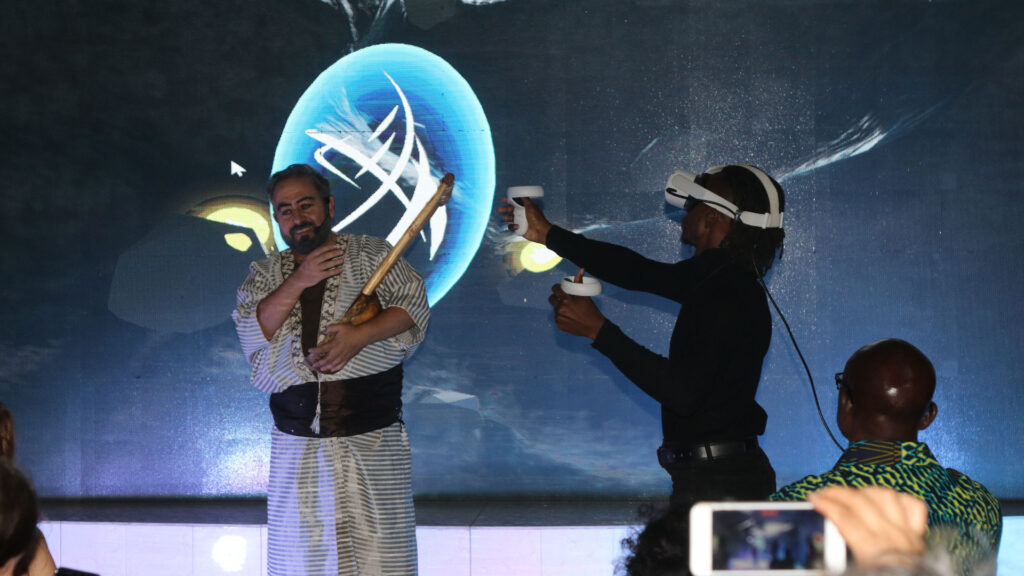Whether making musical theatre or attending classical concerts, CAPHE researchers proved performance both a field of inquiry and an avenue for engagement during the project’s initial secondment. Events took place at a range of venues in Nairobi and incorporated new technologies as performers from Europe and Africa displayed their talents.
Musicians from Italy led the performative turn, working with professional and community groups in the capital to weave offerings that underscored the transcultural aspect of artmaking in hybrid environments. The visual identity of the show and the new technology elements introduced in the performance where the work of partners from Greece and partners from Poland supported operational elements of the show. They created works that demonstrated the power of virtual reality in enabling new forms of expression and performative art.
Researchers from the Conservatorio Puccini La Spezia and Opera Network Firenze worked with their counterparts from Kenyatta University on Orpheus, Lwanda and the Khthónios Journey, a case-study performance composed by the University’s Elijah Adongo and choreographed by Priscilla Gitonga that opened CAPHE’s symposium on New Coordinate for Hybrid Space-Experiences. Conceived by the Opera Network’s Carla Zanin and co-conducted by Federico Bardazzi from La Spezia, the production that included virtual reality dance and display drew on the Italian canon and the mythology of Kenya’s Luo tribe.
In a groundbreaking collaboration, researchers from Narratologies, an innovative Greek startup, joined forces with researchers from the NKUA Department of Computer Science to pioneer the integration of visual projections and virtual reality elements into the realm of performative arts. Led by Natasha Papathoma and Aliki Iovita, both hailing from Narratologies, a one-week intensive “Orpheus & Lwanda” Transmedia Workshop was successfully hosted. The workshop brought together students from the Kenyatta University, School of Creative Arts, Film and Media Studies, who collaborated on creating captivating visual animations inspired by local culture and narratives.
Additionally, Christos Lougiakis, a distinguished researcher from NKUA, contributed to the project by developing a mesmerizing VR scene. This immersive experience allowed the dancer to explore the virtual world of Orpheus and Euridice while providing spectators with a first-person view of the entire performance. The seamless integration of extended reality (XR) technologies into the realm of performative arts marks a true breakthrough in the field.
The collaborative efforts of these talented individuals have propelled the boundaries of hybrid space exploration in the realm of performative arts, opening up exciting possibilities for future artistic endeavors.
The Italian partners also worked with local troupes Ghetto Classics and Dance Korogocho for a performance in Nairobi’s Korogocho slum. Like the Symposium production, that performance featured tenor Leonardo di Lisi and musicians Alessandra Montali, Andrea Bareggi and Andrea Nicoli.
Project participants also attended a recital of contemporary and classical compositions performed by musicians from Poland, including violinist Alicija Pilarczyk, soprano Sylwia Burnicka-Kalischewska and pianist Dominik Wizjan. The trio from the Art Academy in Szczecin played at the National Museum of Kenya before an audience that included Jacek Bazański, Poland’s ambassador to Kenya.

